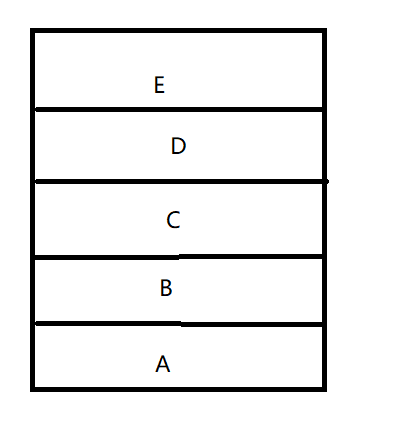一、字典的特性
1、通过花括号定义,以键值对的形式存在(key:value)
2、同一个字典中key不能重复,value可以重复
3、字典是无序的
test_dict = {"key":"value","key1":"value1"}
二、字典的创建
1、直接花括号赋值:
test_dict = {"key":"value","key1":"value1"}
2、通过dict()创建
test_dict1 = dict(a=1,b=2,c=3)
print(test_dict1)
结果:{'a': 1, 'b': 2, 'c': 3}
3、通过dict.fromkeys(list1,list2)
list1 = ["a","b","c"]
list2 = ["abc"]
test_dict3 = dict.fromkeys(list1,list2)
print(test_dict3)
结果:{'a': ['abc'], 'b': ['abc'], 'c': ['abc']}
4、通过dict(zip(list1,list2))创建
list1 = ["a","b","c"]
list2 = ["1","2","3"]
test_dict = dict(zip(list1,list2))
print(test_dict)
结果:{'a': '1', 'b': '2', 'c': '3'}
三、字典取值
test_dict = {"a":"1","b":"2","c":3}
1、通过key取值
result = test_dict["a"]
print(result)
结果:1
2、通过字典的.get("key"),不存在的时候默认返回None,不会报错
test_dict = {"a":"1","b":"2","c":3}
result1 = test_dict.get("b")
result = test_dict.get("bb")
print(result1)
结果:2
print(result)
结果:None
3、.keys()获取所有的key
result = test_dict.keys()
print(result,type(result))#取出的数据类型是dict_keys,不能直接取值,需要转换成list来用
结果:dict_keys(['a', 'b', 'c']) <class 'dict_keys'>
4、.values()获取所有的value
result = test_dict.values()
print(result,type(result))#取出的数据类型是dict_values,不能直接取值,需要转换成list来用
结果:dict_values(['1', '2', 3]) <class 'dict_values'>
5、.items()获取所有的键值对
result = test_dict.items()
print(result,type(result))#取出的数据类型是dict_items,不能直接取值,需要转换成list来用
结果:dict_items([('a', '1'), ('b', '2'), ('c', 3)]) <class 'dict_items'>
result1 = list(result)
result2 = dict(result1)
print(result2)
结果:{'a': '1', 'b': '2', 'c': 3}
6、遍历
(1)遍历所有的key
for key in test_dict.keys():
print(key)
结果:
a
b
c
(2)遍历所有的value
for value in test_dict.values():
print(value)
结果:
1
2
3
(3)遍历所有键值对
for key,value in test_dict.items():
print(key,value)
结果:
a 1
b 2
c 3
四、字典修改
1、通过key修改对应value
(1)只可以改value,不可以改key
test_dict = {"a":"1","b":"2","c":3}
test_dict["a"] = 4
print(test_dict)
结果:{'a': 4, 'b': '2', 'c': 3}
(2)如果key不存在,就相当于新增
test_dict["aa"] = "test"
print(test_dict)
结果:{'a': 4, 'b': '2', 'c': 3, 'aa': 'test'}
2、新增
(1)直接新增
test_dict["bb"] = "python"
print(test_dict)
结果:{'a': 4, 'b': '2', 'c': 3, 'aa': 'test','bb':'python'}
(2).setdefault(key,value),key不存在新加一对,key存在则不变
--如果字典中有则不变
test_dict.setdefault("a","value")
print(test_dict)
结果:{'a': 4, 'b': '2', 'c': 3, 'aa': 'test', 'bb': 'python'}
--如果字典中没有则添加一个键值对
test_dict.setdefault("cc","value")
print(test_dict)
结果:{'a': 4, 'b': '2', 'c': 3, 'aa': 'test', 'bb': 'python', 'cc': 'value'}
3、合并字典
test_dict1 = {"a":"1","b":"2","c":3}
test_dict2 = {"d":"4","e":"5","f":6}
将test_dict2合并到test_dict1(修改test_dict1)(test_dict2不会动),如果test_dict2与test_dict1有相同的key,则会把test_dict1的值,更新为test_dict2的值
test_dict1.update(test_dict2)
print(test_dict1)
结果:
{'a': '1', 'b': '2', 'c': 3, 'd': '4', 'e': '5', 'f': 6}
五、字典删除
1、通过del删除,无返回值
test_dict = {"a":"1","b":"2","c":3}
del test_dict["a"]
print(test_dict)
结果:{'b': '2', 'c': 3}
2、通过.pop("key")删除,返回删除的value
test_dict = {"a":"1","b":"2","c":3}
result = test_dict.pop("a")
print(result)
结果:1
3、.popitem()随机删除一个,以元组形式返回被删除的键值对(key,value)
以python进栈出栈顺序删除:后进先出原则

E先出,依次往后删除
test_dict = {"a":"1","b":"2","c":3}
result = test_dict.popitem()
print(result)
结果:('c', 3)
4、.clear()清空字典
test_dict = {"a":"1","b":"2","c":3}
test_dict.clear()
print(test_dict)
结果:{}
六、字典排序
1、根据ASCII码来排序的
2、sorted(key[或value],reverse)
test_dict = {"a":"5","b":"3","c":1}
result = sorted(test_dict.keys(),reverse=True)
print(result)
结果:['c', 'b', 'a']
3、sorted(test_dict.items(),key=operator.itemgetter(0))
itemgetter(0)中的0代表根据key排序,1代表根据value排序
test_dict = {"c":"5","b":"3","a":"6"}
result = sorted(test_dict.items(),key=operator.itemgetter(0))
排序后返回的类型是list类型,需要手动转换为dict类型
print(dict(result))
结果:{'a': '6', 'b': '3', 'c': '5'}
欢迎来到testingpai.com!
注册 关于